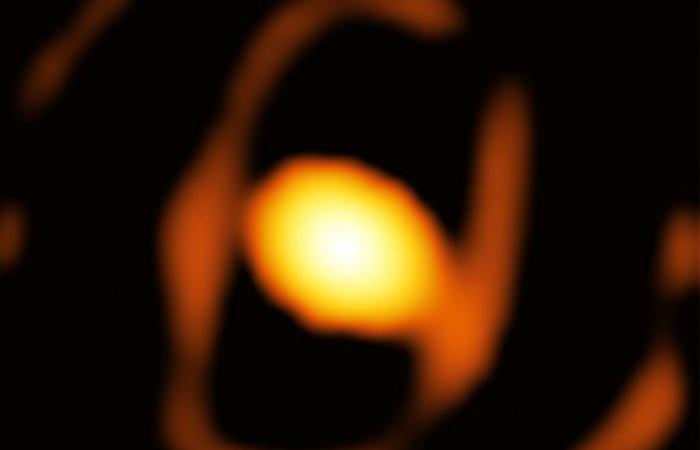For the first time ever, scientists have captured an image of a star outside our own galaxy. Known as WOH G64, the colossal red supergiant was pictured 160,000 light-years away shedding its outer layers, the prelude to a huge supernova explosion.
“This star is one of the most extreme of its kind, and any drastic change may bring it closer to an explosive end,” said Dr Jacco van Loon, co-author of the study and Keele Observatory director.
The star can be found in the Large Magellanic Cloud, a dwarf galaxy at the edge of the Milky Way (and about one-third the Milky Way’s size).
“Observing a star within our galaxy in such detail would be remarkable, but it’s even more extraordinary given that WOH G64 is located beyond the Milky Way,” Dr Darren Baskill, Physics and Astronomy lecturer at the University of Sussex, who was not involved in the project, told BBC Science Focus.
Within our Milky Way, experts have only taken zoomed-in, detailed photos of 25 stars.
“Stars are at enormous distances from Earth, something we have only appreciated over the last 200 years,” adds Baskill. “It is incredibly difficult to observe the physical processes happening so close to stars.”
Researchers were able to picture WOH G64 thanks to the Very Large Telescope Interferometer (VLTI). Based in Chile’s European Southern Observatory, the VLTI combines light from four 8-metre (26.2 feet) tall telescopes, and four smaller ones.
Using the VLTI, researchers detected a dust cocoon around the red supergiant, likely from gas and dust the star expels, or possibly due to a companion star.
Although the celestial body will become dimmer with time, scientists believe observing WOH G64 could reveal the secrets of other stars.
“Such work helps us to understand the final stages of stellar evolution, before these stars end their lives as a supernova. These red supergiant stars and the resulting supernova are also responsible for making most of the chemical elements that we, as humans, are made up of,” Baskill said.
About our expert:
Dr Darren Baskill is a lecturer in Astronomy and Physics at the University of Sussex. He specialises in communicating all things space to the public and has over 25 years of experience in the astronomy field.
Read more:






